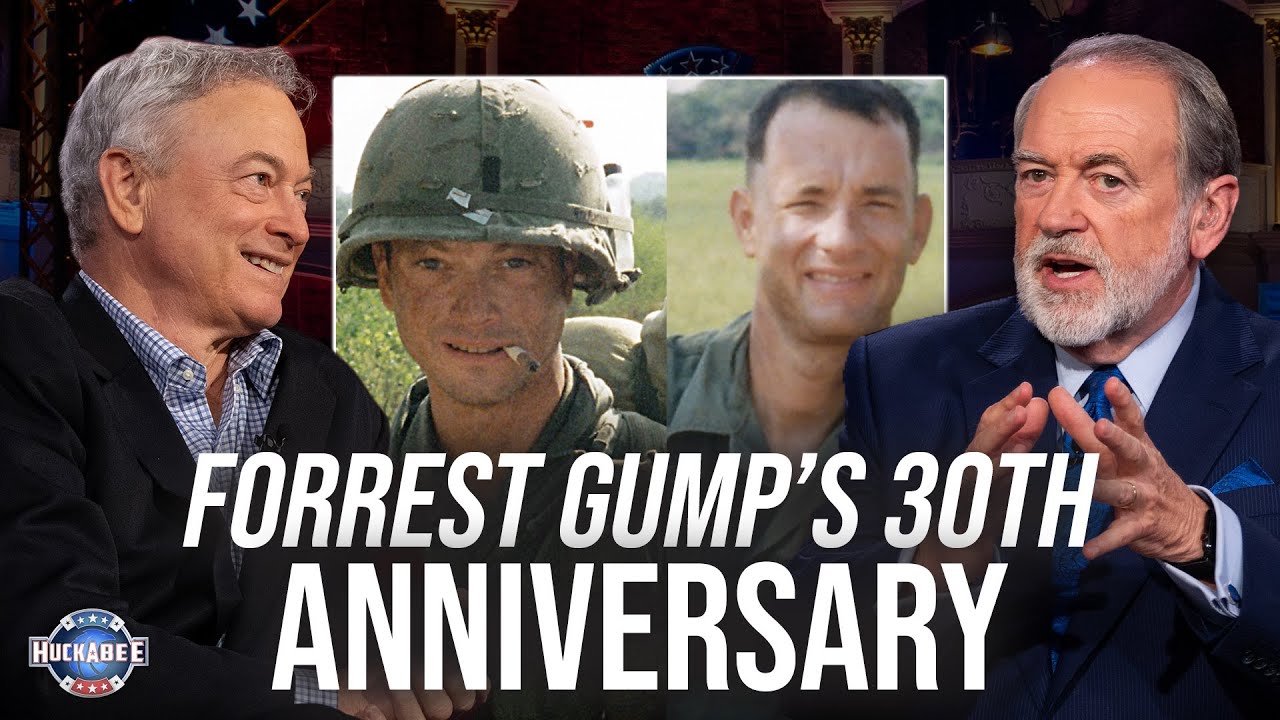Three decades have passed since Forrest Gump first jogged into the hearts of moviegoers, offering a unique blend of historical fiction and heartwarming drama. As they revisit this iconic film, viewers might find themselves reflecting on how its themes of love, destiny, and resilience resonate in today’s world. The film, starring Tom Hanks in what became one of his most memorable roles, has undeniably left a lasting imprint on cinema.
Looking back, one can’t help but wonder: has the passage of time altered the way we perceive Forrest’s whimsical journey through pivotal moments in American history? This review delves into the enduring legacy of Forrest Gump, exploring its impact and relevance three decades after its release. As they peel back the layers of this cinematic gem, they’ll examine what makes it continue to capture the imagination of audiences worldwide.
Overview of Forrest Gump
Plot Summary
“Forrest Gump,” directed by Robert Zemeckis and released in 1994, narrates the extraordinary life of Forrest Gump, played by Tom Hanks, a man with a low IQ who inadvertently influences several historical events in the 20th century. Despite his intellectual challenges, Forrest possesses a unique clarity of heart and mind, which guides him through an eventful life. The film cleverly interweaves his personal milestones with landmark moments in American history, from the Vietnam War to the Watergate scandal. Forrest’s journey is not just a passage through time but is heavily textured with emotions and the unpredictability of life. His adventures encapsulate feats like starting a shrimp business, inspiring the famous smiley face, and running across the country, which not only brings joy but also a sort of simple wisdom to his audiences.
Key Characters and Cast
Forrest Gump, portrayed by Tom Hanks, stands at the center of the narrative, delivering a performance that earned him an Academy Award for Best Actor. Hanks brings a mix of naivety and wisdom to the character, making Forrest both lovable and inspirational. Other crucial characters include Jenny Curran, played by Robin Wright, who is Forrest’s childhood friend and long-time love interest. Her life contrasts sharply with Forrest’s, filled with turbulence and struggles reflecting the era’s counterculture movement. Lieutenant Dan Taylor, portrayed by Gary Sinise, is another significant character who represents a turning point in Forrest’s life. Initially, a grumpy war veteran, Dan eventually finds new meaning in life through his association with Forrest. The cast is rounded out by Sally Field as Mrs. Gump, Forrest’s supportive and wise mother, who delivers the iconic line, “Life is like a box of chocolates, you never know what you’re gonna get.” Each character contributes to the rich tapeography of Forrest’s life, creating an engaging and emotional ensemble that adds depth to the story.
Cultural Impact of Forrest Gump Over 30 Years
Influence on Cinema
“Forrest Gump,” released in 1994, not only won the hearts of audiences worldwide but also set a new benchmark in the realm of cinema. The film’s innovative use of digital effects to integrate the protagonist into historical footage was groundbreaking at the time. This technique influenced numerous subsequent films and is now a staple in historical and biographical storytelling. Directors and filmmakers have drawn inspiration from the film’s ability to merge fact with fiction seamlessly, creating immersive narratives that engage viewers both intellectually and emotionally.
Moreover, Forrest Gump’s narrative structure, which focuses on a central character’s journey through various pivotal moments in history, has inspired a genre of storytelling that intertwines personal stories with broader historical events. This method has been evident in films and TV shows that followed, where the historical backdrop serves to enrich the narrative of the characters’ personal lives, much like it does in Forrest Gump.
Quotes and Dialogues in Popular Culture
The cultural imprint of “Forrest Gump” is perhaps most vividly seen through its quotes and dialogues that have permeated popular culture. Phrases like “Life is like a box of chocolates, you never know what you’re gonna get,” and “Run, Forrest, Run!” have transcended the context of the movie to become part of everyday language. These lines are not just quoted but are often used in various contexts, from motivational speeches to casual conversations, illustrating their broad appeal and enduring relevance.
Schools and universities use these quotes to spark discussions about destiny and resilience, while motivational speakers often reference them to encapsulate life’s unpredictability and the importance of perseverance. The persistence of these quotes in public discourse highlights the film’s lasting impact on popular culture, resonating with diverse audiences across different generations.
Visual and Technical Achievements
Cinematography and Special Effects
“Forrest Gump” stands out as a seminal film that merged sophisticated cinematography with ground-breaking special effects to create a visually compelling narrative. The film’s use of cutting-edge technologies allowed it to integrate Tom Hanks into archival footage, making it possible for Forrest to interact with historical figures such as John F. Kennedy and John Lennon. This visual trickery was revolutionary at the time, breathing new life into historical footage and seamlessly weaving fiction with reality.
In addition to these integrations, the cinematography by Don Burgess showcased an array of visually stunning compositions that contributed profoundly to the storytelling. Notably, the feather that floats through the air in the opening and closing scenes serves as a powerful symbol of destiny and chance, captured with gentle pans and a delicate touch that complements the film’s tender narrative.
Soundtrack and Musical Score
The musical score of “Forrest Gump,” composed by Alan Silvestri, is equally noteworthy. It features a mix of genres that effectively mirror the changing times depicted in the movie and resonate deeply with the emotional landscape of the narrative. From Elvis Presley to Bob Dylan, the soundtrack not only enriches the scenes but also anchors them firmly in their respective eras, enhancing the audience’s immersion into the story.
Silvestri’s original compositions like the “Forrest Gump Suite,” which encapsulates the essence of the film’s emotional and narrative arcs, have left an indelible mark on cinema. The score builds a rich auditory tapestry that complements the visual storytelling, making the film not just a visual but also an auditory experience. This successful auditory portrayal adds layers to the film, ensuring the score’s place as an integral part of “Forrest Gump’s” enduring appeal.
Themes and Messages
Exploration of American History
“Forrest Gump” serves as a poignant narrative that weaves through several pivotal moments in American history, seen through the eyes of the seemingly naive but incredibly kind-hearted protagonist, Forrest Gump. As Forrest narrates his life story, the audience is taken on a journey through critical events such as the Vietnam War, the civil rights movement, and the Watergate scandal. This unique perspective offers a fresh lens to view events that shaped the nation, making history accessible and relatable to viewers by placing an everyman at the center of these historical occurrences.
The film ingeniously integrates Forrest into real historical footage, blurring the line between the character’s world and real events. This creative decision not only impresses from a technical standpoint but also deepens the film’s impact as it seamlessly fuses fiction with reality, encouraging viewers to reconsider the human elements within the grand tapestry of history.
Life Philosophy and Inspirational Messages
One of the most enduring aspects of “Forrest Gump” is its ability to convey profound life lessons through simple yet impactful dialogues and situations. The film’s most famous line, “Life is like a box of chocolates, you never know what you’re gonna get,” encapsulates its central theme of unpredictability and resilience. Forrest’s journey is not one of clear choice but rather a series of serendipitous events, suggesting that one’s path in life can be as random as it is destined.
The narrative champions the values of perseverance, integrity, and kindness. Despite facing numerous challenges, including bullying due to his intellectual disability and physical disability, Forrest’s unyielding decency and loyalty to those he loves underscore a powerful message: that true strength lies in the goodness we bring to others’ lives, not in our accolades or achievements.
Additionally, the relationship dynamics in “Forrest Gump” highlight the influences of love and friendship. His lifelong love for Jenny, despite the hardships and heartbreaks, along with his friendships with Bubba and Lieutenant Dan, reflect the human need for connection and belonging. Each relationship in the film conveys essential truths about love, loss, acceptance, and recovery, driving home the message that while life can be difficult and unpredictable, it is also filled with immense beauty and opportunities for growth.
Performance and User Experience
Acting Performances
The standout element in “Forrest Gump” is indisputably the acting performances, particularly that of Tom Hanks, who masterfully brings the character of Forrest to life. Hanks’s portrayal is both nuanced and charismatic, allowing audiences to navigate through the emotional and historical layers of the story. His role earned him an Academy Award for Best Actor, a testament to his skill in capturing the essence of a man who, despite his intellectual challenges, influences key historical events through his simplicity and kindness.
Supporting roles, such as Robin Wright as Jenny and Gary Sinise as Lieutenant Dan, also contribute significantly to the depth of the story. Wright’s portrayal of Jenny is poignant and complex, capturing the tumultuous waves of her life alongside Forrest. Sinise, on the other hand, embodies the transformation of Lieutenant Dan with a gripping intensity that mirrors the film’s themes of redemption and resilience.
Emotional Impact on Audiences
“Forrest Gump” has left an indelitable mark on audiences, largely due to its ability to weave profound emotional narratives with historical events. The film’s storytelling approach allows viewers to experience a gamut of emotions, from joy and laughter at Forrest’s innocent quips to sadness and empathy towards his unrequited love for Jenny. The emotional journey of the characters coupled with the historical backdrop makes the film resonate on multiple levels, appealing to a diverse audience.
The film’s unique narrative style and emotional depth have fostered a sense of nostalgia and reflection among viewers, sparking discussions about destiny and the randomness of life. Quotes from the film, such as “Life is like a box of chocolates,” have become part of everyday language, reminding people of the film’s lessons on unexpected adversities and opportunities. This emotional connection has not only ensured the film’s place in cinematic history but continues to attract new viewers, maintaining its relevance and impact decades after its release.
Comparison With Contemporary Cinema
Film Techniques Then and Now
Forrest Gump, released in 1994, was a pioneer in blending advanced CGI with live-action footage, setting a benchmark in visual storytelling that profoundly influenced the industry. The movie famously featured scenes where Forrest interacts with historical figures such as presidents and celebrities, achieved through seamless digital effects. At the time, this technique not only captivated audiences but also set a new standard for the integration of technology in film.
In comparison, modern cinema has seen exponential growth in the use of CGI and digital effects, driven by advancements in technology. Contemporary films often rely heavily on CGI, sometimes to the extent that entire worlds are digitally constructed, as seen in movies like Avatar or the Marvel Cinematic Universe. While Forrest Gump used CGI sparingly to enhance the storytelling, today’s films frequently employ it to create visually stunning spectacles that were unimaginable three decades ago.
Moreover, Forrest Gump’s sound design and score were critical in conveying the film’s emotional depth. The use of classic songs and a poignant score effectively mirrored the historical periods depicted in the movie. Today, while many films still use music to great effect, there is a greater integration of electronic music and sound design that can sometimes overshadow traditional scoring methods.
Storytelling and Sensibilities
Forrest Gump was unique for its time, owing to its narrative that skillfully wove personal stories with pivotal moments in American history. This storytelling technique not only provided entertainment but also a commentary on the socio-political landscape of the era it covered. It gently nudged viewers to reflect on the significant events through the eyes of an innocent and simplistic protagonist, making it relatable and profoundly impactful.
Comparatively, contemporary cinema often features darker, more complex narratives that reflect current societal issues more bluntly and with nuanced protagonists who present flawed yet realistic traits. Movies like Joker or Parasite push the boundaries of how stories connect with real-world issues, focusing on societal struggles and deeper psychological analysis.
Moreover, today’s audience sensibilities have shifted to prefer more diverse and inclusive storytelling, reflecting wider societal changes in terms of gender, race, and cultural representation. Forrest Gump did touch on issues like the Vietnam War and showed diverse characters, but through a lens that is now critiqued by some for its oversimplification or rose-colored nostalgia.
These changes in film techniques and storytelling reflect not only the technological advancements but also the evolving audience preferences and societal norms, illustrating a dynamic shift in how stories are told and perceived in cinema compared to when Forrest Gump was first released.
Relevance in Today’s Context
Themes That Resonate in the Current Era
Over three decades since its release, “Forrest Gump” continues to engage audiences with themes that are as pertinent today as they were in 1994. Central themes of destiny, resilience, and the impacts of socio-political changes resonate largely due to their timeless nature. Forrest’s journey through pivotal moments in American history, including the Vietnam War and the civil rights movements, parallels today’s climate of political activism and social justice. This gives the story a continued relevance, illustrating how individual actions can influence larger societal changes.
Additionally, the theme of embracing differences and overcoming personal limitations through Forrest’s character – who despite his intellectual challenges achieves remarkable things – speaks volumes in today’s era, where inclusivity and representation are heavily emphasized. This theme inspires a conversation about recognizing the potential within every individual, making the movie a point of reference in discussions around societal expectations and personal achievements.
Educational Value in Modern ピM
“Forrest Gump” serves as a prime example of how films can educate by merging entertainment with informative historical storytelling. Educators and historians commend the film for its ability to engage and inform audiences about significant historical events through the lens of a relatable character. It offers a digestible overview of decades of American history, which can be particularly useful in educational settings to spark interest in socio-political history among younger generations who may not be captivated by traditional teaching methods.
Moreover, the film’s portrayal of historical events and figures provides a foundation for critical discussions about historical accuracy and narrative bias in media. It raises awareness about the power of cinema in shaping public perceptions of history, encouraging viewers to question and explore further, rather than passively consuming information. This aspect makes “Forrest Gump” an enduring educational tool in classrooms and discussions around the impact of media on historical knowledge and public memory.
Conclusion
Reflecting on “Forrest Gump” three decades after its release, it’s clear the film remains a cultural and cinematic beacon. Its ability to weave complex historical narratives with a deeply personal story continues to captivate and educate. Through Forrest’s eyes, audiences explore the resilience required to navigate life’s unpredictable challenges. This film not only entertains but also enriches, proving that great stories can indeed stand the test of time. As we look forward, “Forrest Gump” will undoubtedly continue to inspire discussions and offer insights, just as it has for the past thirty years.



 RELATED POSTS
RELATED POSTS





0 Comments